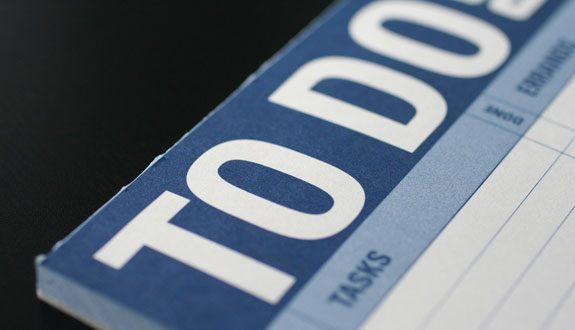[et_pb_section bb_built=”1″ inner_width=”auto” inner_max_width=”1080px” next_background_color=”#000000″][et_pb_row][et_pb_column type=”4_4″][et_pb_image _builder_version=”3.0.77″ src=”https://blog.blueprintprep.com/wp-content/uploads/2017/10/lsat-10-3-post_24658823_18d09128af0571783e7042575b03932262aed565.jpeg” show_in_lightbox=”off” url_new_window=”off” use_overlay=”off” align=”center” always_center_on_mobile=”on” border_style=”solid” force_fullwidth=”on” show_bottom_space=”on” align_last_edited=”on|desktop” align_tablet=”center” /][/et_pb_column][/et_pb_row][/et_pb_section][et_pb_section bb_built=”1″ fullwidth=”off” specialty=”off” inner_width=”auto” inner_max_width=”1080px” prev_background_color=”#000000″][et_pb_row][et_pb_column type=”4_4″][et_pb_text _builder_version=”3.0.77″ background_layout=”light” border_style=”solid”]
So, what is the LSAT? Aside from an incredibly difficult exam, it is the golden ticket. Your LSAT score (along with your GPA) means pretty much everything when applying to law school. It measures your level of reading comprehension, your logic & reasoning skills, your analytical skills. If it could help you in law school, it’s likely being analyzed in this exam.
So, what’s on the test?
[/et_pb_text][et_pb_image _builder_version=”3.0.77″ src=”https://blog.blueprintprep.com/wp-content/uploads/2017/10/lsat-10-3-what-_24661446_8dd8dcd65caf4fa966fa3c5072e0f9078e9e38e3.jpeg” show_in_lightbox=”off” url_new_window=”off” use_overlay=”off” align=”center” always_center_on_mobile=”on” border_style=”solid” force_fullwidth=”off” show_bottom_space=”on” align_last_edited=”on|desktop” align_tablet=”center” /][et_pb_text _builder_version=”3.0.77″ background_layout=”light” border_style=”solid”]
As mentioned in the infographic above, the LSAT is made up of five different sections and a writing sample. Each section is allotted 35 minutes. There is no set order for this exam, except that the writing sample will always be the last thing you complete, and there is always a 15 minute break after the third section.
Logical Reasoning
Your score is about 50% based on logical reasoning as it comprises two of the four graded sections. This is a skill that is invaluable in understanding how people argue and make cases – something you will analyze heavily in law school – so it is no surprise that it is so heavily weighted.
Sometimes logic is anything but logical. These questions are not written to be straightforward. In fact, the LSAT authors deliberately write questions to confuse the test-takers. They can predict your predictions and they word answers just to trip you up. You will have a better time working from wrong to right here. Eliminate the answers that don’t belong and work with what’s left. If you give yourself fewer options, it is often easier to reason out which answer best suits the question.
This section consists of a passage – usually an argument – followed by questions based off of the content. Don’t let the wording trick you.
Reading Comprehension
The four passages in this section are based on four different subjects: Humanities, Social Sciences, Natural Sciences, and Law. Luckily, no prior knowledge of these subjects is required. The passages will explain everything you need to know to answer the questions following it.
The SAT really focuses on local details and specific sentences in each passage. The LSAT, on the other hand, focuses heavily on the main idea, purpose and author’s view of each passage. The best strategy for this section is to know what to look for in the passages. Practice might not make perfect, but it will definitely help. The more you understand the style of the passages and how the questions are pulled, the easier it is to answer them quickly and accurately.
Logic Games
This section is also known as Analytical Reasoning. It consists of four different logic games that are each followed by a series of 5-7 questions. Each game is preceded by a scenario and a list of rules that must be followed.
Most games test your ability to group, sequence, and match sets of variables based on the rules presented, so these skills are the key ones to master before sitting for the test. Each skill can also be broken into several subtypes. A good percentage of the questions are based on a rule that applies only for the duration of that question.
The most effective way to tackle this section is by diagramming. The purpose of the diagram is to have a visual of the game and its rules. The key to this section is a solid understanding of the setup of the game: spending an extra minute working through the game’s setup can make some of the questions extremely quick and easy.
Experimental
This section is unscored and can either be a reading comprehension, a logical reasoning section, or a logic games section. While unscored, this section serves a purpose. The questions in this section are being tested for future use. Don’t try to figure out if a section is experimental while you’re taking the test, as it’s essentially impossible to tell. So, take each section as seriously as the others.
Writing Section
This will be the last section you see on the exam. Like the experimental section, this section is unscored. Despite a lack of score, though, your writing sample will be sent to schools along with your scores. So, you should still take this seriously.
How to Register
You can register online, by phone, or by mail to take the LSAT. More information on where to register can be found here.
When
There are two more exams offered in 2017-2018, which are on December 2nd and February 10th. LSAC changed its age-old tradition of four tests a year for the 2018-2019 school year, offering five tests on June 11th, September 8th, November 17th, January 26th, and March 30th.
Each test is administered on a Saturday at 8:30 am, except for the June test which is offered on a Monday at 12:30pm. If for religious reasons you are unable to test on a Saturday, you can appeal to take your test on the following Monday.
There are deadlines to register for each test date that can be found here.
Where
The test is not administered at every location on every test date, so the test center you choose depends on the test date you choose. The list of test centers can be found here.
Taking the Test
What to Bring
In order to check-in for the exam, you must have the following items with you: your unsigned admission ticket with a passport like photo, a valid and up-to-date government issued ID, and 3-4 HB or No 2 pencils with good erasers. You also will probably want to bring a 20oz bottle of water and a snack for the break.
Check-In
Your admission ticket will have a reporting time (usually 8:30am); it is very important that you show up no later than this time.
Once you hand over your identification, you will be required to sign the certifying statements to ensure that you are who you say you are.
In the Testing Room
You are allowed to bring some personal items into the testing room with you. The following items are allowed, but must be contained in a clear 1 gallon Ziploc bag: Valid ID, wallet, keys, feminine hygiene products or medical products, No2 pencils, a pencil sharpener, highlighter, tissues, a beverage in a plastic container or juice box, and a snack for break. All of these items must fit into a sealed Ziploc and kept under your seat.
You may keep some items on your desk. Your admission ticket, ID, approved pencils, erasers without a sleeve, tissues, pencil sharpener, highlighter, and an analog wristwatch.
Cell phones and other electronic devices are not permitted on the premises. More information about what to do on the day of the test can be found here.
Scoring
[/et_pb_text][et_pb_image _builder_version=”3.0.77″ src=”https://blog.blueprintprep.com/wp-content/uploads/2017/10/lsat-10-3-scori_24661451_46691af31d4d4e2bdee34df8e956322db74bcf93.jpeg” show_in_lightbox=”off” url_new_window=”off” use_overlay=”off” align=”center” always_center_on_mobile=”on” border_style=”solid” force_fullwidth=”off” show_bottom_space=”on” align_last_edited=”on|desktop” align_tablet=”center” /][et_pb_text _builder_version=”3.24″ text_text_shadow_horizontal_length=”text_text_shadow_style,%91object Object%93″ text_text_shadow_horizontal_length_tablet=”0px” text_text_shadow_vertical_length=”text_text_shadow_style,%91object Object%93″ text_text_shadow_vertical_length_tablet=”0px” text_text_shadow_blur_strength=”text_text_shadow_style,%91object Object%93″ text_text_shadow_blur_strength_tablet=”1px” link_text_shadow_horizontal_length=”link_text_shadow_style,%91object Object%93″ link_text_shadow_horizontal_length_tablet=”0px” link_text_shadow_vertical_length=”link_text_shadow_style,%91object Object%93″ link_text_shadow_vertical_length_tablet=”0px” link_text_shadow_blur_strength=”link_text_shadow_style,%91object Object%93″ link_text_shadow_blur_strength_tablet=”1px” ul_text_shadow_horizontal_length=”ul_text_shadow_style,%91object Object%93″ ul_text_shadow_horizontal_length_tablet=”0px” ul_text_shadow_vertical_length=”ul_text_shadow_style,%91object Object%93″ ul_text_shadow_vertical_length_tablet=”0px” ul_text_shadow_blur_strength=”ul_text_shadow_style,%91object Object%93″ ul_text_shadow_blur_strength_tablet=”1px” ol_text_shadow_horizontal_length=”ol_text_shadow_style,%91object Object%93″ ol_text_shadow_horizontal_length_tablet=”0px” ol_text_shadow_vertical_length=”ol_text_shadow_style,%91object Object%93″ ol_text_shadow_vertical_length_tablet=”0px” ol_text_shadow_blur_strength=”ol_text_shadow_style,%91object Object%93″ ol_text_shadow_blur_strength_tablet=”1px” quote_text_shadow_horizontal_length=”quote_text_shadow_style,%91object Object%93″ quote_text_shadow_horizontal_length_tablet=”0px” quote_text_shadow_vertical_length=”quote_text_shadow_style,%91object Object%93″ quote_text_shadow_vertical_length_tablet=”0px” quote_text_shadow_blur_strength=”quote_text_shadow_style,%91object Object%93″ quote_text_shadow_blur_strength_tablet=”1px” header_text_shadow_horizontal_length=”header_text_shadow_style,%91object Object%93″ header_text_shadow_horizontal_length_tablet=”0px” header_text_shadow_vertical_length=”header_text_shadow_style,%91object Object%93″ header_text_shadow_vertical_length_tablet=”0px” header_text_shadow_blur_strength=”header_text_shadow_style,%91object Object%93″ header_text_shadow_blur_strength_tablet=”1px” header_2_text_shadow_horizontal_length=”header_2_text_shadow_style,%91object Object%93″ header_2_text_shadow_horizontal_length_tablet=”0px” header_2_text_shadow_vertical_length=”header_2_text_shadow_style,%91object Object%93″ header_2_text_shadow_vertical_length_tablet=”0px” header_2_text_shadow_blur_strength=”header_2_text_shadow_style,%91object Object%93″ header_2_text_shadow_blur_strength_tablet=”1px” header_3_text_shadow_horizontal_length=”header_3_text_shadow_style,%91object Object%93″ header_3_text_shadow_horizontal_length_tablet=”0px” header_3_text_shadow_vertical_length=”header_3_text_shadow_style,%91object Object%93″ header_3_text_shadow_vertical_length_tablet=”0px” header_3_text_shadow_blur_strength=”header_3_text_shadow_style,%91object Object%93″ header_3_text_shadow_blur_strength_tablet=”1px” header_4_text_shadow_horizontal_length=”header_4_text_shadow_style,%91object Object%93″ header_4_text_shadow_horizontal_length_tablet=”0px” header_4_text_shadow_vertical_length=”header_4_text_shadow_style,%91object Object%93″ header_4_text_shadow_vertical_length_tablet=”0px” header_4_text_shadow_blur_strength=”header_4_text_shadow_style,%91object Object%93″ header_4_text_shadow_blur_strength_tablet=”1px” header_5_text_shadow_horizontal_length=”header_5_text_shadow_style,%91object Object%93″ header_5_text_shadow_horizontal_length_tablet=”0px” header_5_text_shadow_vertical_length=”header_5_text_shadow_style,%91object Object%93″ header_5_text_shadow_vertical_length_tablet=”0px” header_5_text_shadow_blur_strength=”header_5_text_shadow_style,%91object Object%93″ header_5_text_shadow_blur_strength_tablet=”1px” header_6_text_shadow_horizontal_length=”header_6_text_shadow_style,%91object Object%93″ header_6_text_shadow_horizontal_length_tablet=”0px” header_6_text_shadow_vertical_length=”header_6_text_shadow_style,%91object Object%93″ header_6_text_shadow_vertical_length_tablet=”0px” header_6_text_shadow_blur_strength=”header_6_text_shadow_style,%91object Object%93″ header_6_text_shadow_blur_strength_tablet=”1px” box_shadow_horizontal_tablet=”0px” box_shadow_vertical_tablet=”0px” box_shadow_blur_tablet=”40px” box_shadow_spread_tablet=”0px” z_index_tablet=”500″]
You are scored based on how many questions you answer correctly. This score is then converted to a scaled LSAT score ranging from 120-180.
The average test-taker scores about a 150, but the average accepted scores for the top law schools range from 170-173. Your goal is going to depend on where you want to go to law school; a lot goes into selecting a program, such as where the program is located (most lawyers practice in the same region where they attend law school) and financial aid. Be sure to look up the median scores for the schools you are interested in.
What This All Means
The LSAT is by no means an easy exam, but it’s also not impossible. If you properly prepare yourself, then you can do very well. If you’re just getting started with your LSAT prep, consider our FREE online LSAT course. If you’re looking for more help, we offer private 1:1 LSAT tutoring. Our expert LSAT instructors will work with you to build a completely customized study plan. learn more here or set up a free, no obligations consultation here.
[/et_pb_text][/et_pb_column][/et_pb_row][/et_pb_section]



